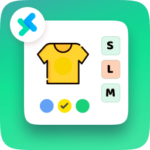The learning curve also is referred to as the experience curve, the cost curve, the efficiency curve, or the productivity curve. This is because the learning curve provides cost-benefit measurements and insight into all the above aspects of a company. A learning curve is typically described with a percentage that identifies the rate of improvement. In the visual representation of a learning curve, a steeper slope indicates initial learning that translates into higher cost savings, and subsequent learnings result in increasingly slower, more difficult cost savings.
For example, the Windows program Notepad is extremely simple to learn, but offers little after this. At the other extreme is the UNIX terminal editor vi or Vim, which is difficult to learn, but offers a wide array of features after the user has learned how to use it. She holds a Bachelor of Science in Finance degree from Bridgewater State University and helps develop content strategies. The user can also be followed outside of the loaded website, creating a picture of the visitor’s behavior. Used by Microsoft Clarity, Persists the Clarity User ID and preferences, unique to that site, on the browser. This ensures that behavior in subsequent visits to the same site will be attributed to the same user ID.
Most often, the percentage given is the amount of time it will take to perform double the amount of repetitions. In the example of a 90% learning curve, this means there is a corresponding 10% improvement every time the number of repetitions doubles. Because learning curve data easily creates trend lines, it’s fairly common to see learning curve data depicted graphically. There are several data points to choose from, one of which is the total cumulative time needed to produce a given number of tasks or units. In the graph below, the learning curve shows that more time is needed to generate more tasks.
Because of the graph’s upward slowing curve, it appears it takes incrementally more time to perform more tasks. However, due to the nature of the learning curve, the x-axis is doubling and incrementally taking less time per unit. For example, consider the graph below that demonstrates the approximate average time needed to perform a given number of tasks.
Economies of Scale vs Learning Curve
- Based on historical data, the company has determined that the learning curve index b is -0.3, meaning that with each doubling of production, the time required to produce each unit decreases by 30%.
- In addition, note that the incremental time is a cumulation of more and more units as the table is extended.
- This percentage represents the proportion by which the amount of an input (or cost) per unit of output is reduced each time production is doubled.
- The percentage of learning for labour costs in the production of these battery units is thus, approximately, 82%.
- In addition to the increased profit potential of improved productivity, new firms or firms starting new operations need to anticipate these gains in deciding whether to engage in a new venture.
- Note that the number of units required to double cumulative production will get progressively higher.
In equation (2), log C is the dependent variable and log Q is the independent variable. If we apply the least-squares procedures to the series of cost-output observations we derive the following equations for estimating the learning curve parameters. While the learning curve theory is broadly applicable, there are limitations to its application.
In this case, the least-squares technique of regression analysis can be applied to estimate the parameters. Nuclear power has seen increased costs, which might reflect limited increase in capacity (countries are wary of massively increasing nuclear power). But, also as time progresses, countries may want to spend more on safety features which increases unit cost. The above do not refer to the “easy phase” of decreasing average cost at low initial levels of production due to the inescapable existence of fixed costs. In practice, the learning curve equation is often transformed into a logarithmic form to simplify analysis, especially when dealing with large datasets. (c) Using this relationship, to estimate the direct labour cost for a subsequent quantity of 7, i.e., 2 to 8 (inclusive) of the new product.
Where C is the input cost of the Qth unit of output, Q is consecutive units of output produced, a is the theoretical (or actual) input cost of the first unit of output, and b is the rate of decline in input cost per unit of output. The value of 6 is normally negative because the learning curve is downward sloping. The general principle of the learning curve—that efficiency improves with experience—applies across various skills and tasks. Some tasks may have a steep initial learning curve but rapidly plateau as maximum efficiency is quickly reached. In contrast, other skills, particularly those that are complex or require deep expertise, may show a more gradual but sustained improvement over time. The difference in learning curves is influenced by the inherent complexity of the task, the prior knowledge of the learner, and the effectiveness of the training methods used.
How Is a Learning Curve Measured and Calculated?
Google One-Tap login adds this g_state cookie to set the user status on how they interact with the One-Tap modal. Master MS Excel for data analysis with key formulas, functions, and LookUp tools in this comprehensive course. This free course guides you on building LLM apps, mastering prompt engineering, and developing chatbots with enterprise data. Master Large Language Models (LLMs) with this course, offering clear guidance in NLP and model training made simple. If you need to contact the Course-Notes.Org web experience team, please use our contact form. When the results of a large number of individual trials are averaged then a smooth curve results, which can often be described with a mathematical function.
How can organizations apply the learning curve concept to improve employee training programs?
This formula helps in calculating the expected time or cost for any unit number (X) based on the initial time and the learning curve index. By plotting the curve, businesses can visually track how their efficiency improves over time. A typical learning curve is normally characterized by an initial stage where changes are steep because of the increasing understanding of how a certain task is to be done. Extending the curve to the right we get a curve that is flattened as further improvement become marginal indicating that the task has become routine and there is little to be gained. This explains why the budget plan should incorporate the effect of learning on costs which, in turn, are related to budgeted volume. At early stages of the production process, the volume of output is usually low.
Why Certain Poker Strategies That Work Online Fall Apart in Live Games and Vice…
Efficiency and development curves typically follow a two-phase process of first bigger steps corresponding to finding things easier, followed by smaller steps of finding things more difficult. It reflects bursts of learning following breakthroughs that make learning easier followed by meeting constraints that make learning ever harder, perhaps toward a point of cessation. Used to store information about the time a sync with the lms_analytics cookie took place for users in the Designated Countries.
Efficiency and productivity improvement can be considered as whole organization or industry or economy learning processes, as well as for individuals. The general pattern is of first speeding up and then slowing down, as the practically achievable level of methodology improvement is reached. When a learning curve has a given percentage, this indicates the rate at which learning and improvement occur.
- This explains why the budget plan should incorporate the effect of learning on costs which, in turn, are related to budgeted volume.
- As output increases, it becomes harder and harder to double a company’s previous output, depicted using the slope of the curve, which means cost savings slow over time.
- The effects of learning curves upon labour costs make it imperative for new product profitability to be analysed over the whole life cycle of the product.
- The term “learning curve” is being used by cost estimators and refers (more or less) to the idea that businesses will have a higher cost per item if they make relatively few products but will have a lower cost per item if they make more products.
- By taking the logarithm of both sides, we can linearize the curve, which makes it easier to estimate the parameters a and b from real-world data through regression analysis.
The learning curve represents the phenomenon where the time or cost of completing a task decreases as experience increases. In simpler terms, as people or organizations perform a task repeatedly, they become more efficient at it, and this is reflected in reduced time or cost per unit of output. When the assembly line is first set learning curve economics up and workers begin assembling the phones, their initial productivity may be relatively low. Each worker is still learning the best methods to assemble the parts, which tools work best for each task, and the most efficient sequence of operations. However, as time goes on and workers gain more experience, they become more efficient at their tasks. Consequently, the factory can produce smartphones more quickly and with fewer errors.
Note that the cumulative quantity must double between rows—to continue the table, the next row must be calculated using a quantity of eight. In addition, note that the incremental time is a cumulation of more and more units as the table is extended. For example, the 600 hours of incremental time for task No. 2 is the time it took to yield one additional task. However, the 960 hours in the next row is the time it took to yield two additional tasks. It has been estimated that the direct labour costs of the first unit of the new product will cost Rs. 400.
As the worker learns from experience lesser and lesser hours are required to finish the same job. Thus, the learning curve theory enables us to predict the average cost at different levels of contemplated output. The equation for the learning curve in the above example is Li — 0.9Li,/2, in which L is incremental labour per unit. If the first unit of output requires 1,000 labour hours, the second will need 900 units, the fourth 810 units, and so on. Computations of average productivity make sense for key inputs around which production processes are designed. In the example of the accounting firm used in this chapter, the number of accountants is probably a good choice.
The learning curve can be implemented using the mathematical model we discussed earlier. Below, I will walk through an example of how to calculate and visualize the learning curve in a practical scenario, such as manufacturing a product. When there is spending on education, people will gain more skills such as literacy, numeracy and problem-solving skills. With this greater education, the general productivity (output per worker) of the economy will increase, leading to higher economic growth and firms will be able to increase wages. I understand that a falling average cost can of course come as a result of the above process, but the dynamic aspect is crucial, contrasted to a static one.
Does the learning curve apply similarly across different skills and tasks?
However, if A and B maintain a price level at which firm A can endure, time per unit for A will decrease at a higher rate than B, because of the steeper slope for lower cumulative volumes of production. Therefore, the longer A stays in the market, the lower the profits for B, as it is drawn in the diagram on the right, where the difference between average times (from Y’A to Y’B) is smaller. Game theory and the analysis of oligopolies tell us that, since B is able to anticipate all these scenarios, firm B will try to banish firm A from the market. Above figure shows the hypothetical long run average cost curves for periods t and t+1. As a result of more experience and enhanced knowledge of production method the long run average costs have declined from LRACt to LARCt+1 for every level of output. This implies that before any learning or experience Qt output was produced at the average cost of OA; whereas after ‘experience’ gained Qt output is produced at average cost of OB.
After a certain point, productivity increases at a decreasing rate, demonstrating the principle of diminishing returns within the learning curve concept. Note that the number of units required to double cumulative production will get progressively higher. For example, if cumulative production now is 1000 units, the next doubling will occur at 2000 cumulative units, with the next doubling at 4000 cumulative units, and the following at 8000 cumulative units. Thus the rate of decline in average cost for each successive unit of production will diminish as cumulative production increases. That is why the learning curve is downward sloping in the beginning with a flat slope toward the end, with the cost per unit depicted on the Y-axis and total output on the X-axis. As learning increases, it decreases the cost per unit of output initially before flattening out, as it becomes harder to increase the efficiencies gained through learning.













